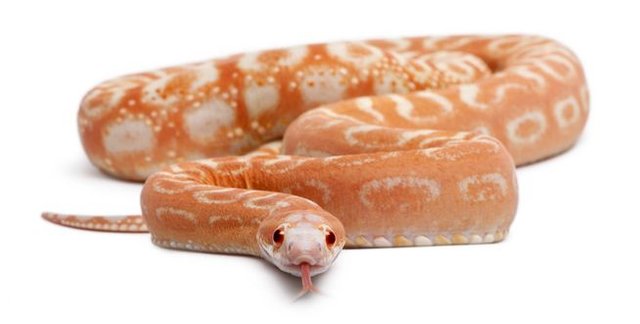10 facts you didn't know about scaleless snakes

When you first see a snake without scales, it will definitely make you do a double take.
Once you realize what you're looking at, you won’t be able to stop yourself from staring, mesmerized that the usual tiny scales are completely gone.
It's true that scaleless snakes were first discovered in the wild more than 70 years ago, and now they're becoming quite popular as pets in captivity.
To help you better understand the phenomenon of these reptiles, i put together a list of fun and little-known facts. Be sure to look for a scaleless snake at your local zoo the next time you’re out and about.
A recent discovery
The first scaleless snake was discovered in 1942 in the wild. It was a western garter snake. A scaleless gopher snake was found and captured in 1971.Scalelessness transcends age
During the years that followed when different scaleless snakes were discovered, scientists pointed out that they were found in various levels of maturity, not just when they were young.Not just the garter snake
Other scaleless breeds of snakes that have been discovered in the wild include ball python, gopher and corn snakes.Mutation, not deformity
For years, people have said that scaleless snakes have a deformity, but this isn't the best description. Mutation is a much better way to describe their difference from other snakes.Cool new pets
Scaleless snakes are starting to become popular options as pets, but it's a trend that generates a lot of debate. Many consider it unnatural while others are just fascinated.Do not add (extra) water
One of the main things researchers have studied about scaleless snakes is their rate of dehydration. Is it faster? After all, it makes sense that scales would help provide and keep moisture. However, the short answer is no. Scientists can't prove this to be true.Keratin instead of dermal
Typical snakes with scales have this dermal layer, which is the outermost layer. Scaleless snakes are missing this completely, but instead have a much thinner keratin layer.A question of survival
If a snake doesn't have scales, does this affect its ability to survive? Surprisingly, scientists are saying maybe not. While there’s not a ton of research out there on this, they believe scaleless snakes could survive just fine. Mark this one as "inconclusive" until more research can be done. It's also a hot debate, so watch out!Not entirely scaleless
Even the snakes that are considered scaleless often have ventral scales, which run along the belly. This helps with their movement and locomotion.Stunning patterns
So why are scaleless snakes so popular? Without the extra layer of scale, the patterns and colors are striking, which is just one reason why so many people want the breeding of these snakes to continue.
Hi! I am a robot. I just upvoted you! I found similar content that readers might be interested in:
https://www.mnn.com/earth-matters/animals/stories/10-facts-you-didnt-know-about-scaleless-snakes